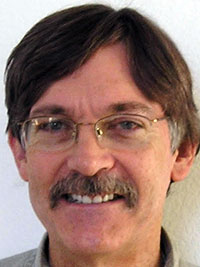
Gregory Fahy
Dr. Gregory M. Fahy (Ph.D) is a cryobiologist and biogerontologist and is the originator and Editor-in-Chief of The Future of Aging: Pathways to Human Life Extension, a multi-authored book on the future of biogerontology. He recently conducted a human clinical trial of aging reversal based at Stanford University, the focus being on reversal of human immune system aging, which is believed to be a major cause of death and illness in people over the age of 65. He is currently planning a follow-up study and clinical application of his findings.
Fahy is the world’s foremost expert in organ cryopreservation by vitrification and is the Vice President and Chief Scientific Officer at Twenty-First Century Medicine, Inc.
He introduced the modern successful approach to vitrification for cryopreservation in cryobiology and he is widely credited, along with William F. Rall, for introducing vitrification into the field of reproductive biology. in 2009, Twenty-First Century Medicine (21CM) published the first report of the successful cryopreservation of a rabbit kidney by vitrification at -130°C and transplantation into a rabbit after rewarming, with subsequent long-term life support by the vitrified-rewarmed kidney as the sole kidney. In 2014, Fahy was named as a Fellow of the Society for Cryobiology, which is the highest honor a cryobiologist can receive for research in low temperature biology.
The work of Fahy and McIntyre won the Small Mammal Brain Preservation Prize in 2016 for showing that the rabbit brain’s connectome (the complete map of all of the brain’s synaptic connections, and presumed to encode the brain’s knowledge) can be preserved for centuries by vitrification, and in 2018 the same team was recognized with the Large Mammal Brain Preservation Prize for showing that the same feat is possible even for pig brains, which are much larger.
Dr. Fahy is a member of the Board of Governors of the Society for Cryobiology and served for 16 years as a Director of the American Aging Association. He serves on the editorial boards of Rejuvenation Research and the Open Geriatric Medicine Journal and served for 6 years as the editor of AGE News. He is a frequent speaker at international scientific meetings, a frequent interviewee for various media outlets, and an occasional author of popular articles on life extension topics.


